rewilding bloedel
Cultivating habitat for pollinators & other native wildlife
Words by Paula Mackay
Photo: Erin Fisher
Early last May I savored a bird marsh in the slanted light before sunset. While my eyes feasted on bull rushes and ferns, my ears drank in the sounds of a thriving wetland. Tree frogs warmed up their ribbit calls for the evening chorus; song sparrows and red-winged blackbirds serenaded the spring. There were other melodies, too: the rattle-chatter of kingfishers, honks from Canada geese, a pileated woodpecker pounding on a distant fir.
The Buxton Bird Marsh and Meadow is the wild side of the Bloedel Reserve, whose impressionist landscape is famous for its curated gardens. Each year, thousands of visitors stroll among meticulous mosses and statuesque rhododendrons, experiencing bold botanical beauty that never disappoints. But those who spend a little extra time in the Buxton area are rewarded with a quieter—and dare I say, messier—genre of masterpiece, co-produced by nature with an earthy palette. As Bloedel landscape designer Erin Hill put it, “the bird marsh invites people to linger in a way that other parts of the grounds don’t.”
The Bloedels converted the area’s original cattail marsh to an irrigation pond decades ago, later expanding the site to include a walking trail and tiny islands for waterfowl. In 2017, former horticulture director Andy Navage collaborated with the Fischer Bouma Partnership to further improve bird habitat, coming up with a plan to pull the trail away from the pond’s edges, install boardwalks, plant buffers and create a pollinator meadow in the adjacent pasture. The resulting environment would benefit a broad diversity of wildlife, including diminutive animals who are often overlooked (see The Value of Bats).
Haley Wiggins didn’t imagine that her master’s degree in fire-adapted forest restoration would lead her to a botanical reserve. Yet in 2019, Wiggins landed at Bloedel to help plant the Buxton hedgerow. Now she’s the reserve’s Garden South Manager, charged with bringing the entire vision to fruition.
The project is a tough row to hoe, striving to showcase Bloedel’s high aesthetic standards while also meeting the needs of pollinators and native wildlife. In some locations, Wiggins and her coworkers began with a blank canvas, like where they removed pernicious blackberries to clear a path for the board walks. In others, their efforts compete with invasive pasture grass and plantain, hellbent on overrunning the native species they’re trying to reestablish. When I ask Wiggins how she doesn’t get overwhelmed, she laughs and says she tackles one task at a time. But she’s clearly fueled by a passion for flora and an overarching commitment to conservation. “My goal is to continue to enhance habitat quality, always keeping an eye toward making things pretty as well—which is not difficult. I mean, who doesn’t love all this beautiful wetland grass and sedge and rush?”
Wiggins is quick to point out the contributions of many people, including Navage, Hill and myriad volunteers who assist on the ground. To create the hedgerow surrounding the meadow, she and her teammates planted 3,500 trees and shrubs in the winter of 2018–19 alone, and they’ve seeded roughly a hundred species of wildflowers over the past couple of years. Portable hives are buzzing with mason bees, and Wiggins is experimenting with controlled burns to suppress growth of invasive pasture grasses and stimulate wildflower growth.
Consulting with regional experts like Bainbridge Island Land Trust on how to improve habitat quality in the marsh, reserve staff have installed nesting boxes for wood ducks and floating wetlands to support foraging birds and amphibians. “We’ve been selecting plant species that we know are going to be good egg-laying habitat for frogs and salamanders,” Wiggins says, noting that the basis of a productive wetland ecosystem is the underlying plant life.
Wiggins emphasizes that habitat enhancement has only just begun. “I can’t wait for five years from now. It’s going to be so cool to see how everything fills in.”
With so much of the natural world threatened by ecological wounds, the healing power of rewilding writ large or small should not be underestimated. I bore witness to this at Bloedel throughout spring and summer, frequenting the Buxton area on several occasions. In a single stint I recorded 20 bird species, and Wiggins tells me that more than 100 species have been documented there. One morning, I was gifted with a female wood duck, mallard and merganser gliding across the pond, their respective fuzzy chicks in tow.
I last visited in late August, and despite the sultry afternoon, I felt vibes of fall in the changing air. Most of the wildflowers had died back, seed heads ready to bring on next year’s bounty. Nuthatches erupted with nasal yank-yanks, effervescent dragonflies skimmed the pond—where mature mallard ducklings darted about. As I circled around the meadow, I was surprised by a pop of color in a triangular bed, bursting with echinacea, tickseed, and an exquisite little flower called “farewell to spring.”
Then there was a wheelbarrow parked neatly by a tree, a practical reminder that sometimes rewilding needs us to lend a hand. Resting in the shade, I relished my favorite sound of all: silence.
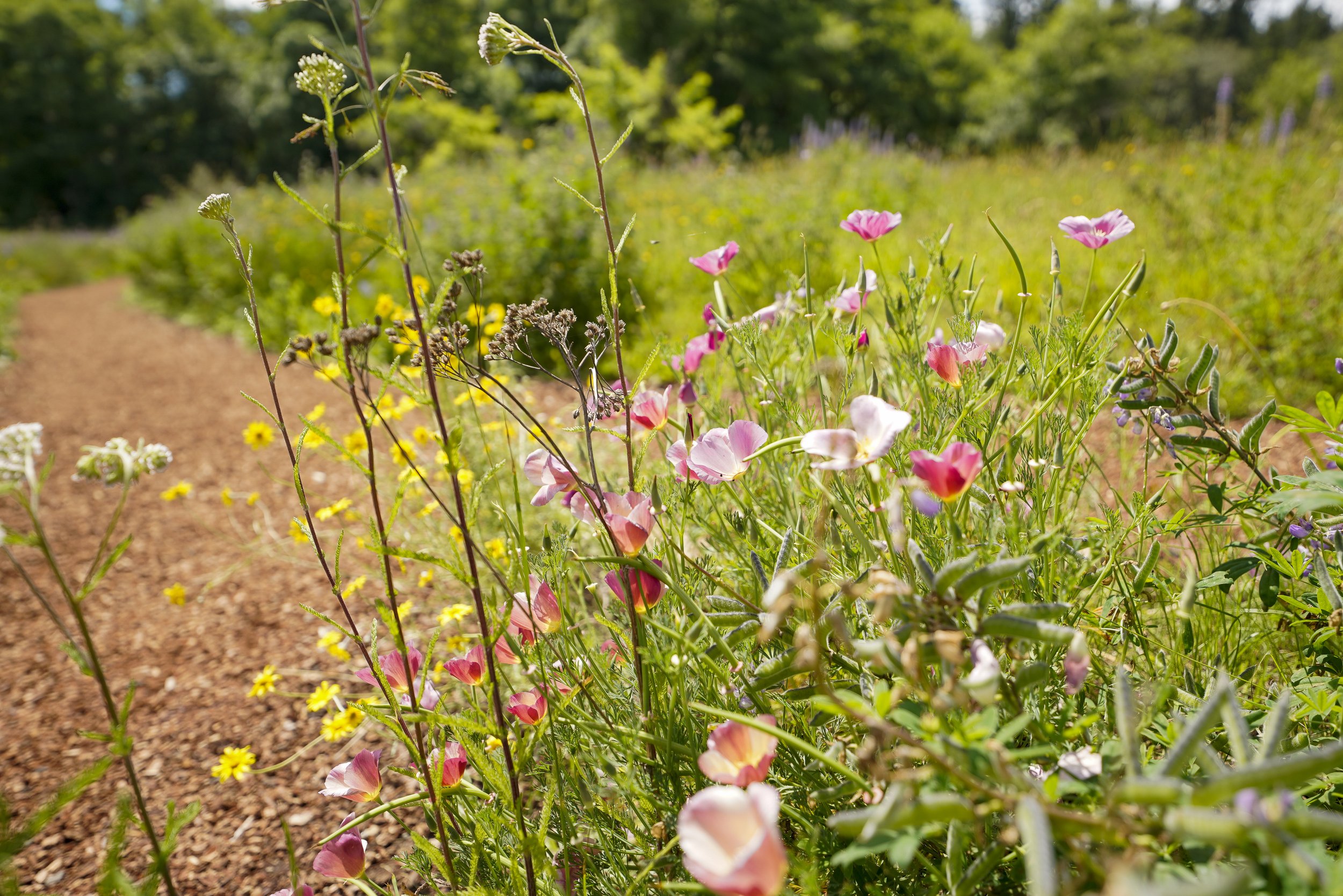
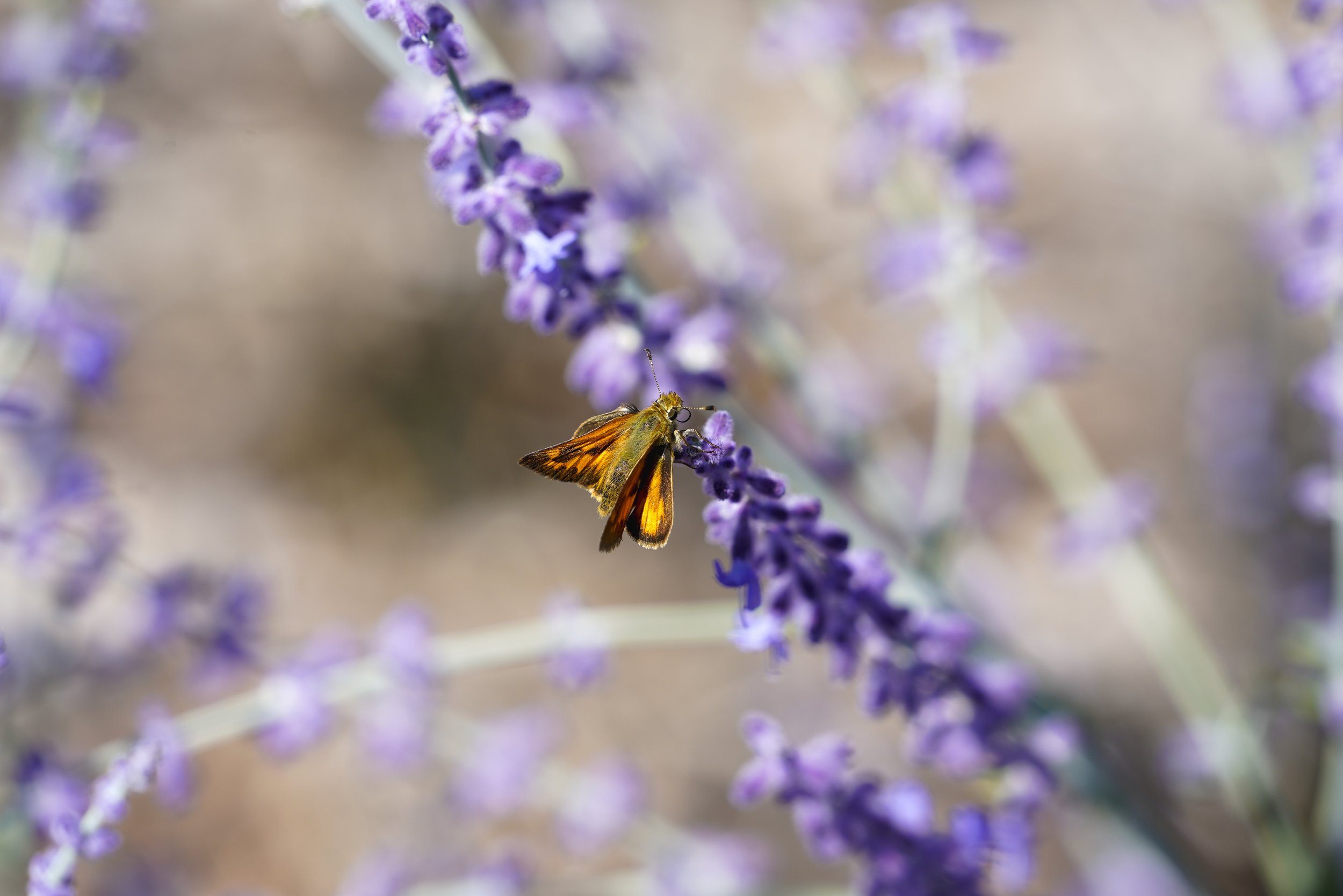
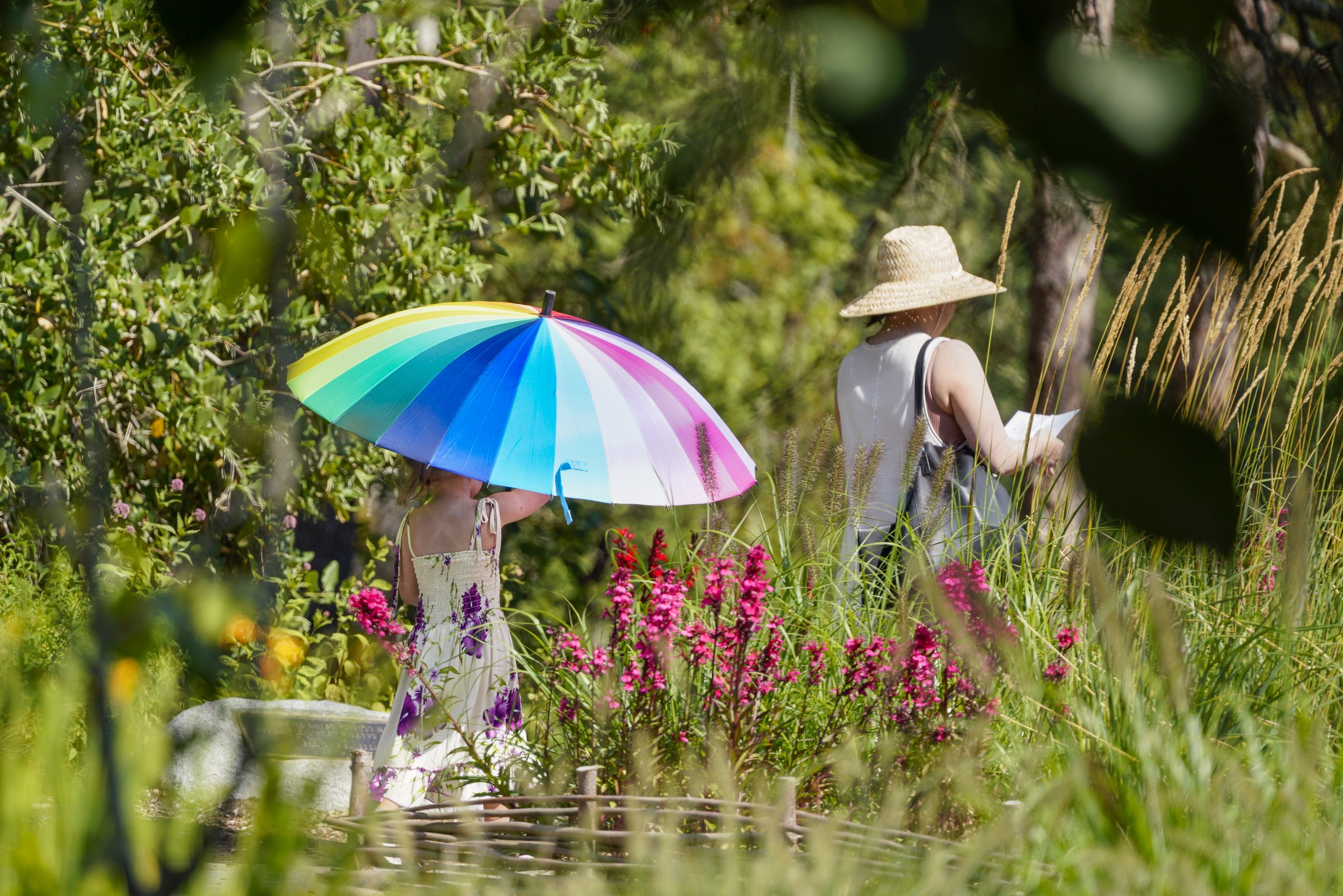
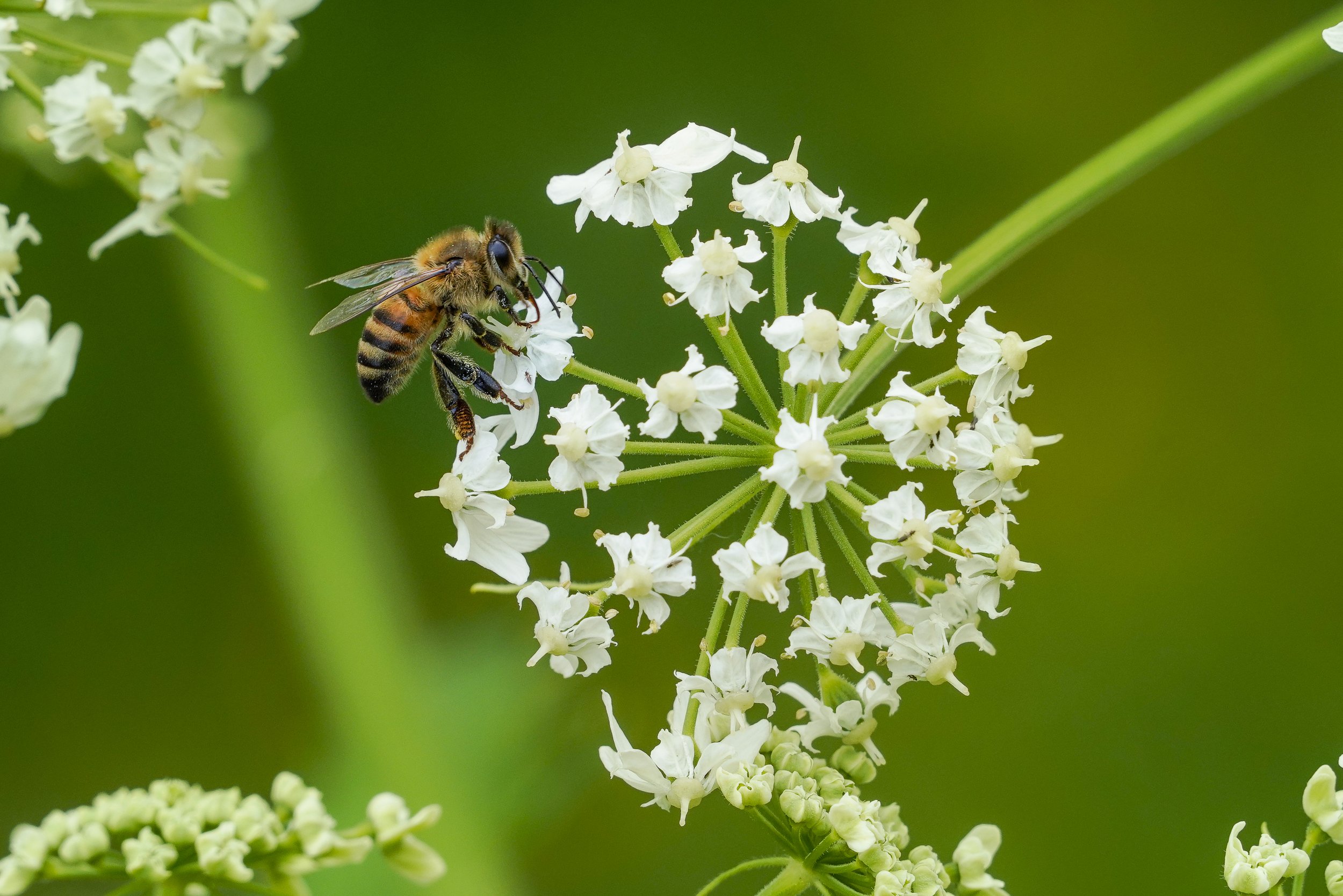

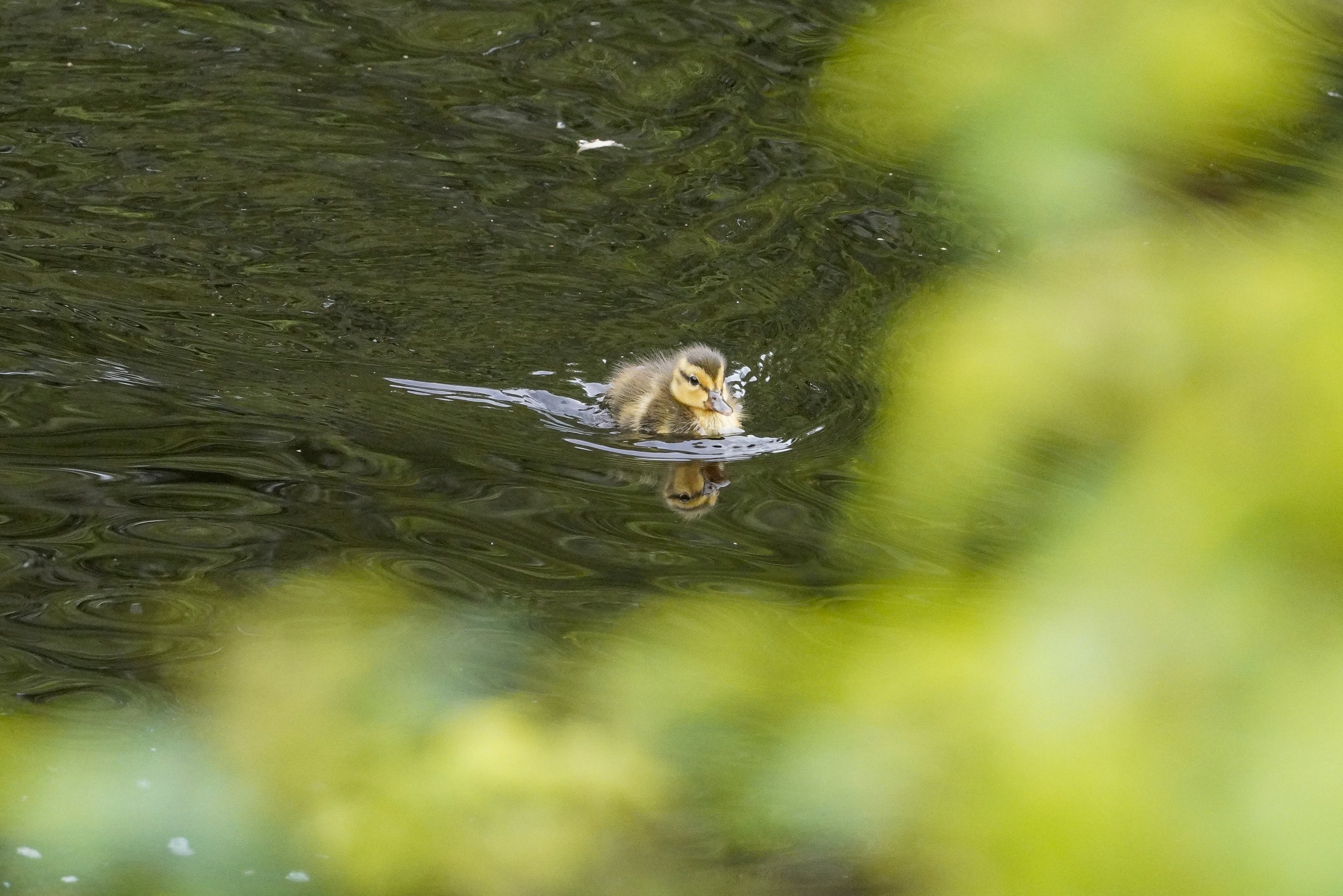
Photos: Erin Fisher
The value of bats
In partnership with Woodland Park Zoo and Bats Northwest (BNW), the Buxton Bird Marsh and Meadow is one of four sites on Bainbridge Island being monitored for bats as part of a North American program involving agencies, tribal partners and nonprofits. Bats are a key predator of insects, including crop pests. “We value birds because they eat insects,” says BNW board member Bernice Tannenbaum. “We should value bats for the same reason. They work the night shift.”Researchers with the monitoring project have detected at least seven bat species foraging for insects on Bainbridge Island. During last summer’s survey at Bloedel, an acoustic device recorded thousands of bat calls in a single night, including from little brown bats (Myotis lucifugus)—a species that has been hit hard elsewhere by a deadly fungal disease called white-nose syndrome. Bats need open water to forage and drink on the fly, making widespread drought another serious threat to bat populations—and places like the Buxton marsh all the more important.
